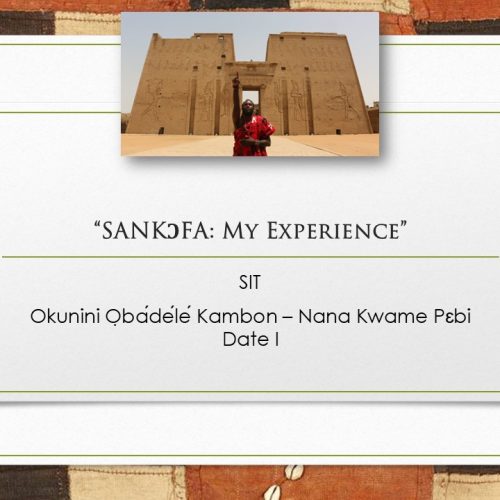-
Interested in thoughts about the depiction of Biko in Western media (namely the film “Cry Freedom”) which, as this scholar suggests, is more about Donald Wood’s life changing after he “befriended” Biko, rather than about Biko and the Black Consciousness Movement’s promotion of self-love to Africans and resistance to apartheid regime.
NJERI NGUGI’s Presenting and (Mis)representing History in Fiction Film: Sembène’s “Camp de Thiaroye” and Attenborough’s “Cry Freedom”
Abstract: “This article will explore what happens when it is the director who calls on historical fact in the production of fiction film. I will argue that in taking on the dual role of director and historian, Ousmane Sembene in Camp de Thiaroye and Richard Attenborough in Cry Freedom ‘control’ history, that is, they depict their vision of a particular set of historical facts – in the hope of persuading their audience that this is the ‘true’ or ‘correct’ representation of what occurred. Sembene tells us, ‘I control the entire film process and I feel completely responsible for it’ (Pfaff 1984: 78). The selection of film as the medium through which to depict a story has several implications which shall be examined in some detail and it is in the product of this selection and representation that the ideology of the directors may be discerned as it is they who select which facts to present and the light in which they shall be cast.”
“Cry Freedom is not the story of Steve Biko, however ‘charismatic, intelligent and fascinating’ the man was. This film tells the story of how the life of Donald Woods was altered by his decision to befriend Biko. Under apartheid, it was not Steve Biko who had such an active choice; his only choice was to react in a friendly, rather than an un-friendly, manner.
Steve Biko chose to lead the Black Consciousness Movement whose aim was to undo apartheid and change for the better the lives of many hundreds of black South Africans. In so doing, he touched the lives and consciences of many including the liberal journalist-editor, Donald Woods and the film maker Sir Richard Attenborough.
Richard Attenborough’s intentions are to tell the story of an unjust system but his primary, western, audience are not living with the unjust conditions depicted in this film. Attenborough says: ‘Through Biko, I wanted to show what life means to blacks and in certain circumstances, to whites. My objective was straightforward…’ Nevertheless, if Attenborough is to attract the audience he wishes to reach, if he is to touch them with the story he wishes to tell, then he must somehow make it accessible and relevant to them.
Because as he states, ‘…I didn’t wish to make a film of despair…’ (Davis 1996: 4), in order to beckon a Hollywood audience into a world they mostly only knew vicariously, through television images of ‘necklacings’ and riots in a violent and, to them, a distant part of the world, his choice was to use the trope of a ‘buddy friendship’.”

 SANKƆFA: My Experience – Intergenerational Transmission of Language, Identity & Liberation
SANKƆFA: My Experience – Intergenerational Transmission of Language, Identity & Liberation 
